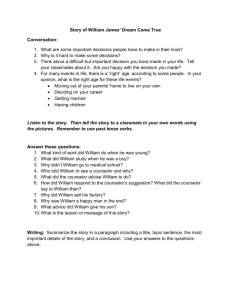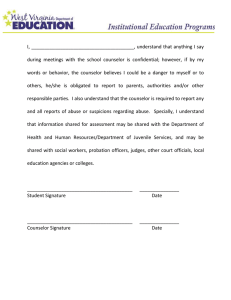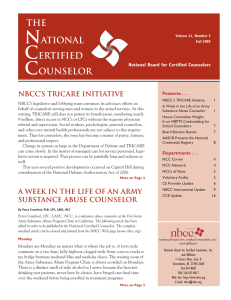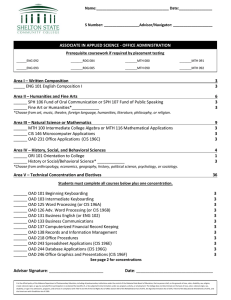Bringing Life to e-Learning: Incorporating a Synchronous Approach to Online
advertisement
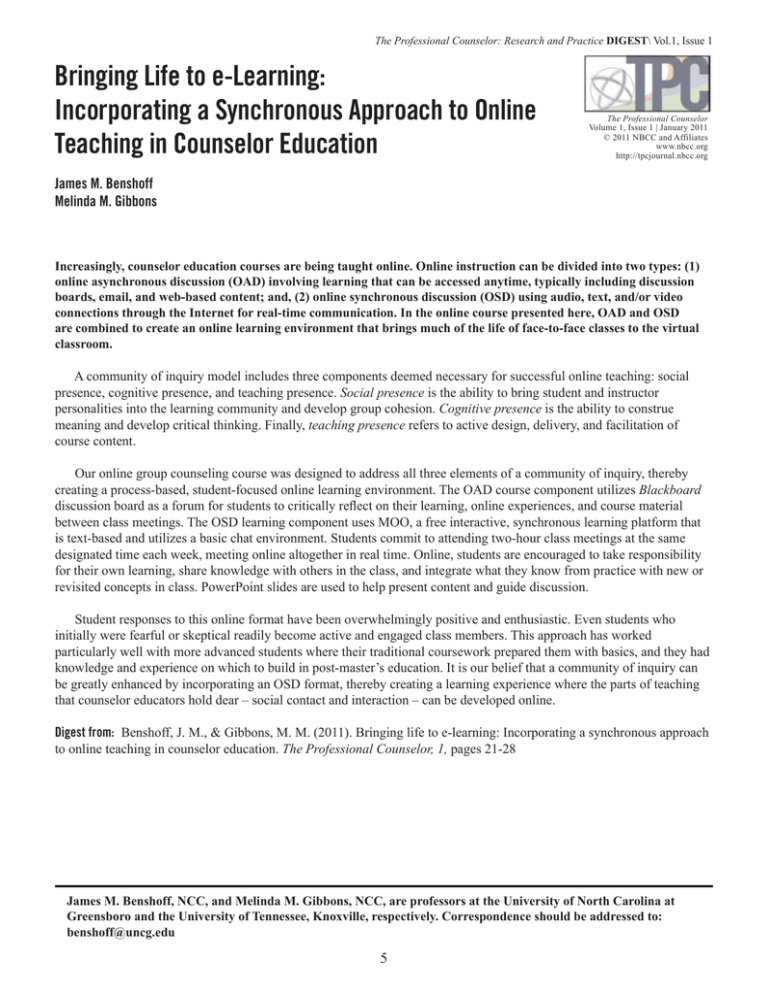
The Professional Counselor: Research and Practice DIGEST\ Vol.1, Issue 1 Bringing Life to e-Learning: Incorporating a Synchronous Approach to Online Teaching in Counselor Education The Professional Counselor Volume 1, Issue 1 | January 2011 © 2011 NBCC and Affiliates www.nbcc.org http://tpcjournal.nbcc.org James M. Benshoff Melinda M. Gibbons Increasingly, counselor education courses are being taught online. Online instruction can be divided into two types: (1) online asynchronous discussion (OAD) involving learning that can be accessed anytime, typically including discussion boards, email, and web-based content; and, (2) online synchronous discussion (OSD) using audio, text, and/or video connections through the Internet for real-time communication. In the online course presented here, OAD and OSD are combined to create an online learning environment that brings much of the life of face-to-face classes to the virtual classroom. A community of inquiry model includes three components deemed necessary for successful online teaching: social presence, cognitive presence, and teaching presence. Social presence is the ability to bring student and instructor personalities into the learning community and develop group cohesion. Cognitive presence is the ability to construe meaning and develop critical thinking. Finally, teaching presence refers to active design, delivery, and facilitation of course content. Our online group counseling course was designed to address all three elements of a community of inquiry, thereby creating a process-based, student-focused online learning environment. The OAD course component utilizes Blackboard discussion board as a forum for students to critically reflect on their learning, online experiences, and course material between class meetings. The OSD learning component uses MOO, a free interactive, synchronous learning platform that is text-based and utilizes a basic chat environment. Students commit to attending two-hour class meetings at the same designated time each week, meeting online altogether in real time. Online, students are encouraged to take responsibility for their own learning, share knowledge with others in the class, and integrate what they know from practice with new or revisited concepts in class. PowerPoint slides are used to help present content and guide discussion. Student responses to this online format have been overwhelmingly positive and enthusiastic. Even students who initially were fearful or skeptical readily become active and engaged class members. This approach has worked particularly well with more advanced students where their traditional coursework prepared them with basics, and they had knowledge and experience on which to build in post-master’s education. It is our belief that a community of inquiry can be greatly enhanced by incorporating an OSD format, thereby creating a learning experience where the parts of teaching that counselor educators hold dear – social contact and interaction – can be developed online. Digest from: Benshoff, J. M., & Gibbons, M. M. (2011). Bringing life to e-learning: Incorporating a synchronous approach to online teaching in counselor education. The Professional Counselor, 1, pages 21-28 James M. Benshoff, NCC, and Melinda M. Gibbons, NCC, are professors at the University of North Carolina at Greensboro and the University of Tennessee, Knoxville, respectively. Correspondence should be addressed to: benshoff@uncg.edu 5
